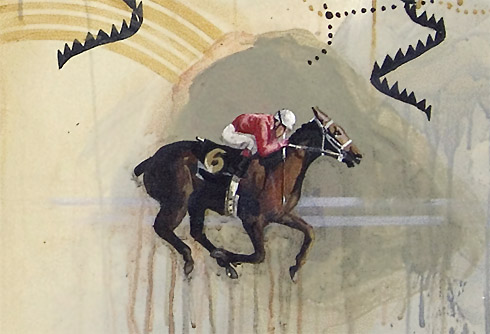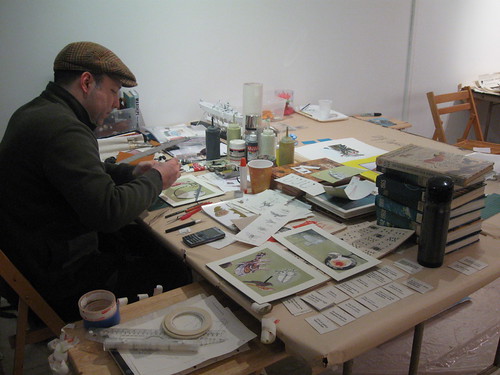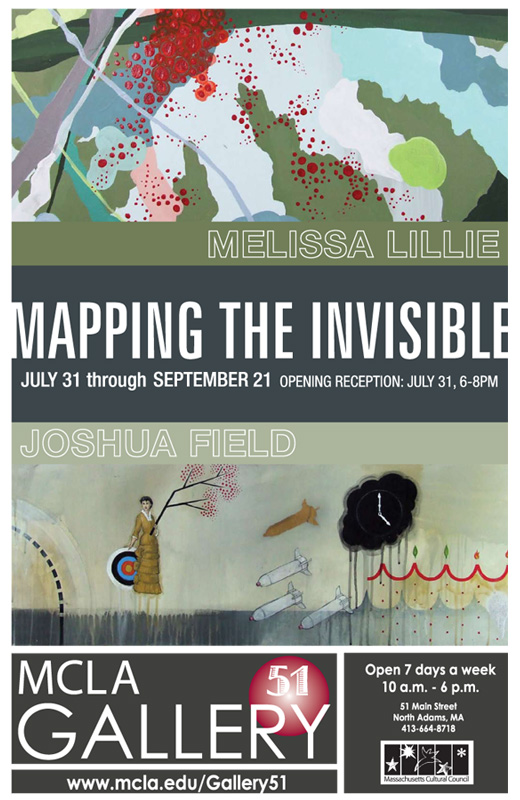Art Fairs 2009, New York
2009 found NYC without the hotel art fairs of previous years (not enough participants) and so, this year’s shows were an unexpected mix of familiar and not so familiar faces from NYC and SF, and galleries from Europe and South America.
Our first stop was BridgeArtFair in Chelsea, as we had a few galleries we wanted to see in the neighborhood as well. I’m not sure if it is a reflection of the economy or the last minute shuffle in the absence of the hotel fairs, but Bridge had the feel of a street art fair where the bar is set low and anything goes. Adding to sense that Bridge was not the venue of choice, was the fact that there was no line to get in. The venue was a straight shot from one end to the other and the presentation felt anemic and last minute. We found ourselves wondering if that was all there was to see when we reached the end of the corridor. Happily, it gave us more time to go straight uptown to the Lincoln Center where SCOPE was being held.

In contrast to our first stop, SCOPE was great. There were lines to get in and the work was surprisingly high quality. A number of my favorite galleries were represented including ada gallery, David B Smith, Jonathan Levine, Lincart and Shooting Gallery to name a few. Â As always, David B. Smith out of Denver had some great work on view including a wall of smaller works by Gregory Euclid (who we recently saw at MASS MoCA) and a beautiful little gouache painting by Oliver Vernon.

Siren Song by Oliver Vernon
Next we went to Volta (the ugly kid sister of the Armory Show) which had a strange energy seemingly fueled by a desire to be “cooler†than thou. Silly sights included a topless woman directing patrons as they rummaged through a pile of yarn looking for $500 necklaces (by Surasi Kusolwong), an installation that consisted mostly of pieces of cardboard crudely lettered with magic marker and plants that one was instructed to direct negative thoughts towards. None of this was particularly compelling. Volta was also the site of a number of examples of the “flavor of the month†which right now seems to be either macramé (guns, hammocks, etc), neon text in various configurations and china (military, peasant worker or tweaked silk paintings).
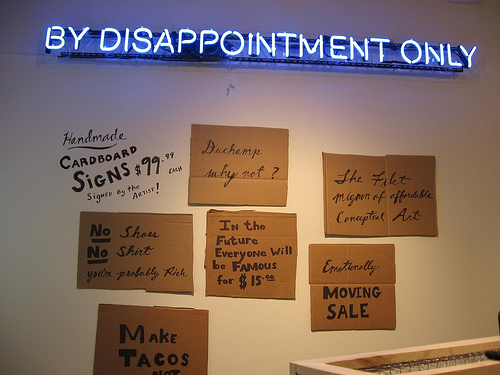
Alejandro Diaz

The next day, we happily set aside a fair amount of time for PULSE, which was seemingly the largest of the fairs that we attended and as high a quality as SCOPE. There was a queue at the ticket counter in advance of the noon opening and people seemed excited about the show (especially given that it was the Sunday morning after the dreaded daylight savings time change). We watched a bit of little league soccer while waiting to get in. One of the highlights from the show was a series of gorgeous drawings at Morgan Lehman Gallery by Eric Beltz (and I spotted a really great little painting by Andrew Schoultz behind the desk).
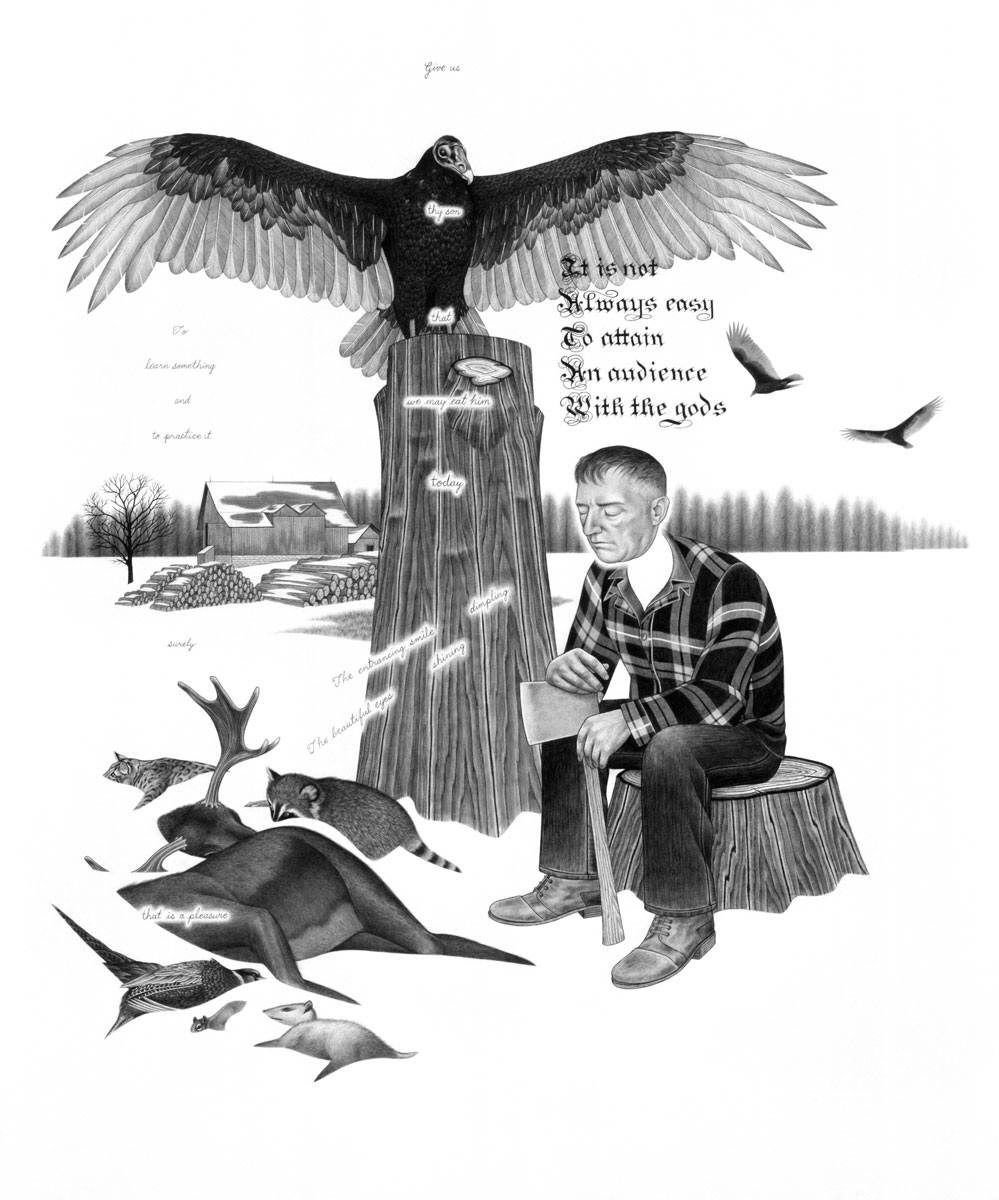 By This Axe I Rule by Eric Beltz |
 Pollution Hole Explosion by Andrew Schoultz |
Other gallery highlights include Richard Heller Gallery out of Santa Monica with works by Edward del Rosario, Mixed Greens Gallery of NYC with Alessandra Exposito’s painted skulls and P.P.O.W. with a lovely little set by Dottie Attie and finally, the incomparable Julie Heffernan at Catherine Clark Gallery.
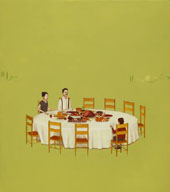 Edward del Rosario |
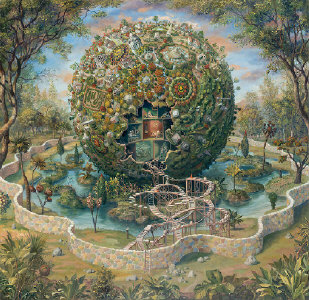 Self Portrait as Big World by Julie Heffernan |

